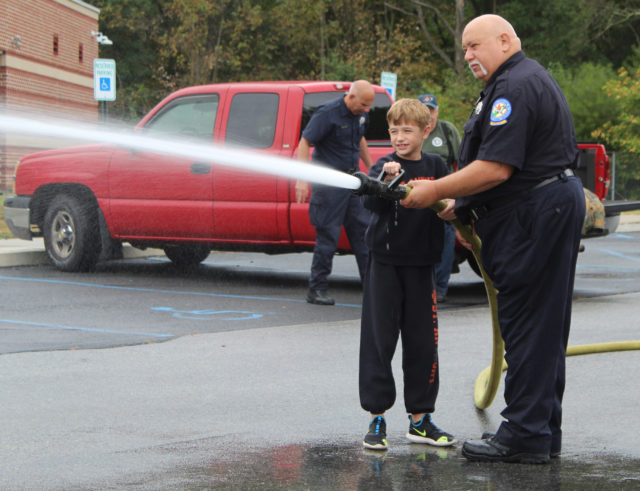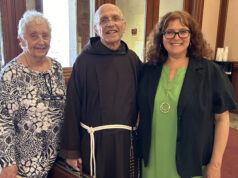
NEW CASTLE — The morning of Oct. 3 was pretty routine for the third grade at St. Anthony of Padua School. They spent much of the morning at desks listening to an instructor, asking questions and taking turns demonstrating what they’d learned to their classmates.
But instead of sitting in their classrooms in Wilmington, they were at the Delaware State Fire School near New Castle. There, they picked up a few pointers about how to make their homes safer and how to increase their chances of surviving a fire.
The presentation began with an video of Bill Nye, the Science Guy, explaining the science of fire. A fire needs heat, oxygen and fuel to survive, Nye explained.
“When you understand the science of fire, you can be safety smart,” Nye said.
Some of the pointers in the video included sleeping with the bedroom door closed and staying close to the ground in case of a fire because that’s where the cooler air is. Never use water to extinguish a grease fire, and always have a fire extinguisher available. In addition, be sure to have working smoke and carbon monoxide detectors in all sleeping areas.
Two instructors from the fire school, Jim Watson and Don Brown, continued the lesson. A lot of what they communicated was common sense, but they know from experience that their advice often goes unheeded.
Brown said with the number of electronic devices people use today, they often overload power strips and outlets, which can be dangerous. A lot of times, a fire caused by an overload will begin inside a wall. Other common causes of household fires include unattended candles, cigarettes and cooking. And with a lot of the materials used in household products, fires don’t burn like they used to.
“In today’s world, a fire burns a lot quicker than it did when I was a kid,” Brown said.
The average amount of time a person has to escape a house today is six minutes. That compares to 10 minutes in the past.
Brown told the third-graders that the weight of the equipment a firefighter must carry into a burning building averages 50 pounds. The helmet alone weighs 10 pounds. He demonstrated what it took for a firefighter to get ready to work, donning the fire-resistant pants and jacket, head covering, face mask and helmet. When he was done, his voice was hard to hear through the mask, and he said he was already sweating.
“When I’m all done, you see zero skin,” he said.
Part of the danger for firefighters is unfamiliarity and visibility. They have no idea what the floor plan is of any house they enter, so they stay close to the floors and walls and use their hands to feel their way around. As for seeing what they’re doing, forget it.
“We have zero visibility. Zip,” he said.
Each firefighter leaves an identification tag outside when they enter a building. That way, their colleagues know how many people are still inside. They also have sensors on their air canisters that blink and beep if they are running low. If all else fails, they have a panic button.
After moving to a different classroom, the students had a demonstration of the fire hazard safety house. Watson said each of them should know the family’s escape plan and should not be afraid to practice it. They should also have a designated meeting place.
Watson explained a few other common causes of fires and household dangers. One of the things he warned the youngsters about was getting electrical devices too close to water. If a radio falls into a bathtub, it could cause death. Each of the students should know how to use the household phones, and if they use cell phones, they should be familiar with the emergency feature.
Despite the gray skies outside, the rain held off, so the students were able to head out to operate a fire hose. One by one, they opened up the hose, sending a stream of water into the street. A few opened it up too fast, and the water pressure sent them back a few steps. Fortunately, Brown or Watson was there to prevent them from taking a spill.
Caitlin Zweidinger, one of the students, enjoyed her chance to shoot the hose.
“It was holding something very heavy,” she said. “It was like shooting a gun.”
Her classmate, Gia DiDonato, said learning about the “fire triangle” — oxygen, fuel and heat — was important.
“I think we really need to learn about how they start and how we can stop them,” Gia said.







